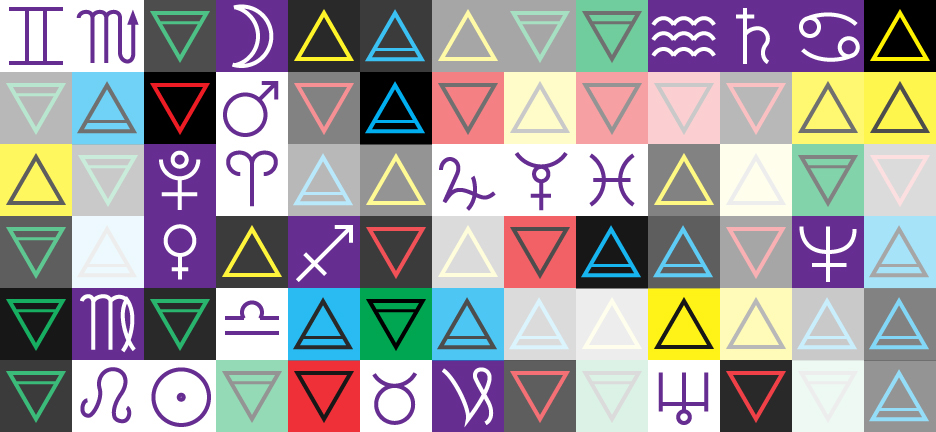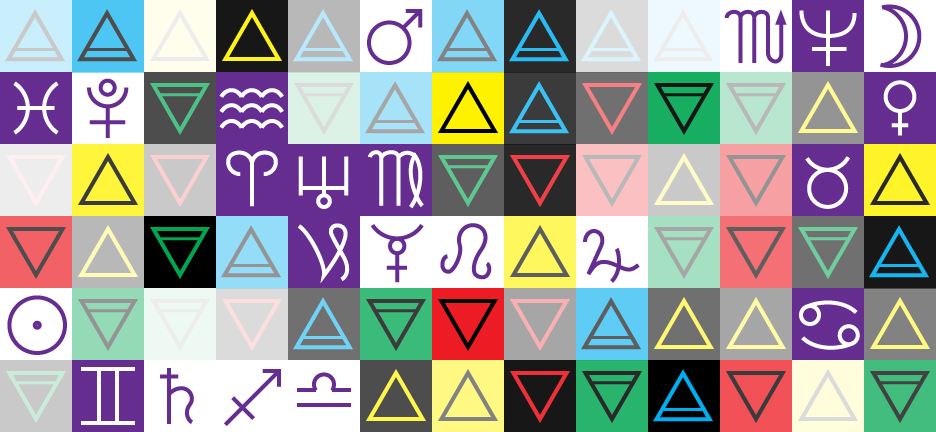

Each of the above grids represents a Tarot deck in its entirety. The Tarot doesn't represent the future so much as the possibilities the future holds. My goal with this project is to show these possibilities in visual form. A Tarot deck contains 78 cards, and each card can be inverted. That means when you draw a single card, you will get one of 156 different possibilities. Now imagine how many different ways a single deck can be laid out in front of you. The odds of getting the exact same deck, let alone the same ten-card spread, are so astronomical that they are limitless to the human mind.
I created a system that would allow me to represent each card individually on the grid. First, I assigned each suit a color: Swords are blue, Coins are green, Wands are yellow, and Cups are red. The Major Arcana or Trump cards I made purple to provide a bit more colorful aesthetic. Then I assigned each number an opacity from 8% for Ace all the way up to 100% for 12. I kept the Major Arcana at 100% opacity.
Once that was done, I created tiles for each suit using that suit's color and symbol. I also created tiles for each of the Major Arcana using a symbol that corresponded to that particular card.
I drew cards from the deck one at a time and placed the corresponding tile on the grid from left to right. A black symbol on a colored background (or purple on white background) represents an upright card. If the card turned up inverted, I reversed the colors -- colored symbol on black or white symbol on purple. I repeated this until the deck was complete.
As you can see, the two shuffles turned out very different from each other, providing just a hint of the magnitude of possibilities Tarot embodies.

